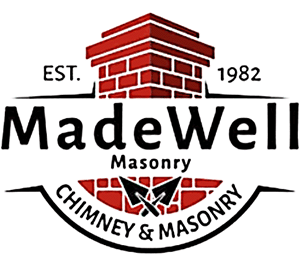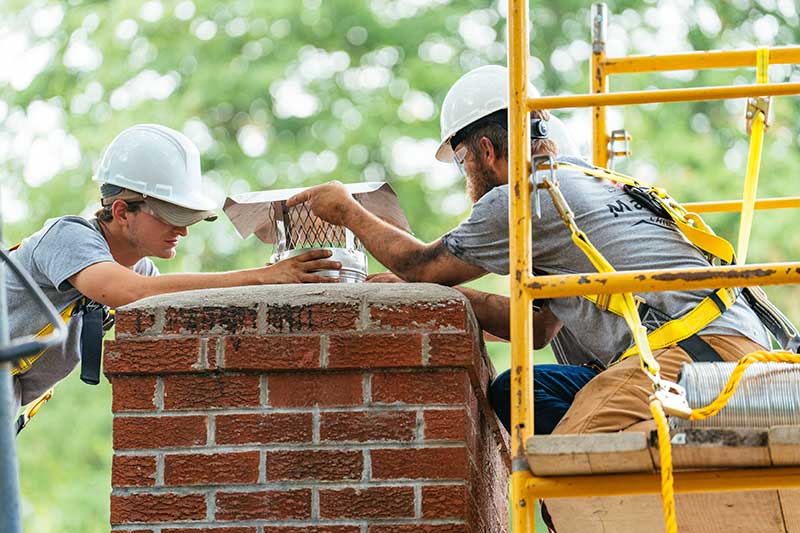Chimneys are essential components of many households, providing ventilation for fireplaces and heating systems. However, they can develop leaks over time, which, if left unaddressed, can lead to significant damage to both the chimney structure and the home itself. In Lakeland, understanding how to manage chimney leaks is crucial for maintaining a safe and comfortable living environment.
Understanding Chimney Leaks
To effectively address chimney leaks, homeowners must first understand what causes them and how to identify their presence. A chimney leak can occur due to various factors, including weather conditions, aging materials, and poor construction practices. Knowing the underlying causes and signs of a leak can help in recognizing the issue early, allowing for timely repairs.
Causes of Chimney Leaks
There are several causes of chimney leaks that homeowners should be aware of:
- Cracks in the Masonry: Over time, bricks and mortar can deteriorate, leading to cracks that allow moisture to enter.
- Improper Flashing: Flashing is the material that seals the roof and chimney joint. If it is poorly installed or damaged, water can seep through.
- Condensation: When warm air from the fireplace meets cold chimney walls, condensation can form and contribute to leaks.
- Damaged Chimney Cap: A missing or damaged chimney cap can leave the chimney vulnerable to rain and debris, increasing the risk of leaks.
Signs and Symptoms of a Leaking Chimney
Being vigilant for signs of a leaking chimney can save homeowners significant headaches and financial strain. Key indicators include:
- Water Stains: Dark spots or streaks on walls or ceilings near the chimney are often the first signs of a leak.
- Mold Growth: A musty odor or visible mold can indicate moisture intrusion resulting from a leak.
- Rust or Corrosion: Rusted fireplace accessories or flue components may signal water infiltration.
If these signs are detected, immediate action is advisable to prevent further damage.
In addition to the visible signs, homeowners should also pay attention to unusual sounds coming from the chimney area. For instance, if you hear dripping or running water, it may indicate that water is pooling somewhere within the chimney structure. Furthermore, regular inspections, especially after heavy rain or snow, can help catch potential issues before they escalate. Homeowners should also consider seasonal maintenance, such as cleaning the chimney and checking the integrity of the flashing and cap, to ensure that their chimney remains in good condition and to mitigate the risk of leaks.
Moreover, understanding the importance of proper ventilation is crucial. A well-ventilated chimney not only helps to prevent moisture buildup but also enhances the efficiency of the fireplace. Homeowners should be aware that inadequate ventilation can lead to a range of problems, including increased creosote buildup, which poses a fire hazard. Therefore, ensuring that the chimney is not only structurally sound but also properly ventilated is key to maintaining a safe and functional fireplace system.
The Importance of Timely Chimney Leak Repairs
Addressing chimney leaks promptly is crucial not only for the longevity of the chimney itself but also for the safety and health of the household. Many homeowners may underestimate the impact of a seemingly minor leak, but the repercussions can be far-reaching.
Potential Damage from Ignored Leaks
Ignoring chimney leaks can lead to significant structural damage. Water intrusion can deteriorate the masonry, requiring extensive and costly repairs. Additionally, a damaged chimney can compromise the effectiveness of the fireplace, leading to dangerous smoke backflow into the home. Long-term exposure to moisture can also weaken the foundation of the chimney and create problems in the home’s surrounding areas.
Health Risks Associated with Chimney Leaks
Health risks are another compelling reason to address chimney leaks promptly. As moisture accumulates, it fosters mold growth, which can exacerbate respiratory issues, allergies, and other health problems. Furthermore, a malfunctioning chimney can lead to the buildup of carbon monoxide, a dangerous gas that poses serious health risks and can even be fatal.
The Process of Chimney Leak Repair
The repair process for chimney leaks typically involves several key steps. Understanding these can help homeowners know what to expect when hiring a professional.
Initial Inspection and Diagnosis
The first step in addressing a chimney leak is a thorough inspection. A qualified technician examines the chimney’s structure, flashing, and relevant components to identify the source of the leak. This diagnosis often involves both visual assessments and specialized tools, such as cameras, to explore the interior of the chimney system.
Repairing Techniques and Tools
Once the source of the leak is identified, the technician will outline the necessary repairs. Common repair techniques include:
- Repointing mortar joints to address any cracks
- Replacing or repairing damaged flashing
- Installing or fixing chimney caps to keep out moisture
- Applying waterproof sealants to vulnerable areas
Using the correct tools and materials ensures that the repair is effective and long-lasting.
Preventive Measures for Chimney Leaks
Prevention is always preferable to repair. Homeowners can take proactive measures to mitigate the risk of chimney leaks. Regular maintenance is key to keeping the chimney in optimal condition.
Regular Chimney Maintenance
Regular inspections and cleanings are essential aspects of chimney maintenance. Homeowners should schedule professional inspections at least once a year, particularly before the heating season begins. This ensures any potential issues are caught early, minimizing the risk of leaks.
Additionally, regular chimney sweeping can prevent creosote buildup, which can contribute to chimney damage and system inefficiency.
Installation of Chimney Caps
Chimney caps are a simple yet effective way to prevent water from entering the chimney. They also offer protection against debris and animals that can obstruct airflow. Installing a cap provides an added layer of security against moisture, ensuring the chimney remains functional and leak-free over time.
Choosing a Chimney Repair Service in Lakeland
When it comes to selecting a chimney repair service, homeowners should be informed and discerning. The right professional can make a significant difference in the outcome of the repairs.
What to Look for in a Chimney Repair Service
Homeowners should consider several factors when choosing a chimney repair service:
- Experience: Look for services with a proven track record of successful repairs.
- Certification: Ensure the company has the necessary qualifications and certifications.
- Insurance: The company should carry insurance to protect homeowners from liability in the event of accidents.
Questions to Ask Your Chimney Repair Professional
Before hiring a chimney repair service, it’s important to ask pertinent questions such as:
- What is the expected timeline for the repairs?
- Can you provide references or examples of previous work?
- What warranties or guarantees do you offer on your services?
By asking these questions, homeowners can ensure they are making an informed decision when it comes to their chimney repair needs.
Don’t let chimney leaks compromise the comfort and safety of your Lakeland home. Trust the experts at Madewell Masonry to provide you with the quality craftsmanship and transparent service you deserve. With our commitment to staying current on industry best practices and our dedication to customer satisfaction, you can be confident that your chimney repair needs will be met with the utmost care and professionalism. Say goodbye to hidden fees, delays, and the stress of subpar work. Choose Madewell Masonry for a seamless repair experience and peace of mind with every fire you light. Ready to ensure your chimney is in top condition? Schedule A Visit! with our skilled team today and experience the Madewell difference.

